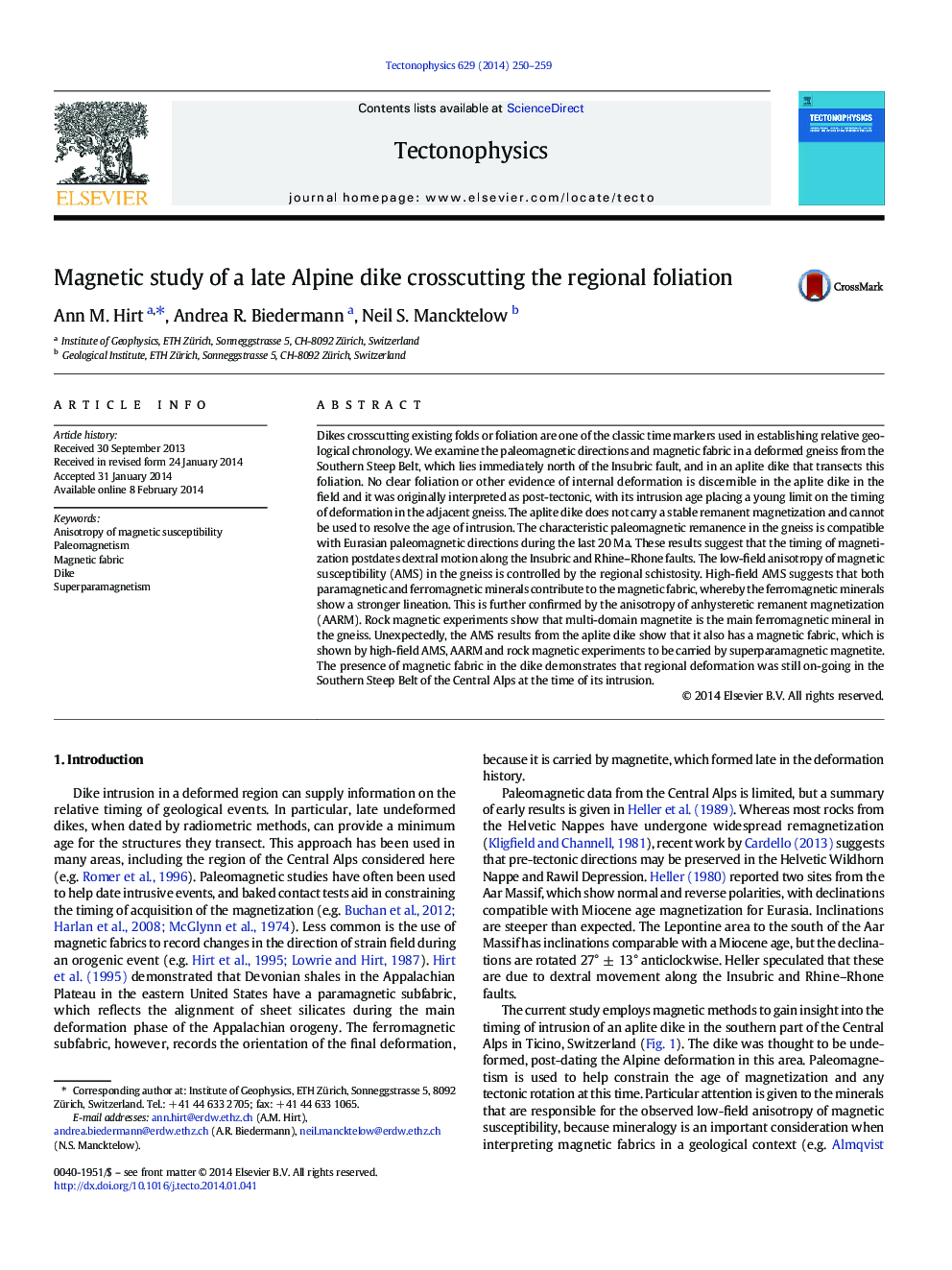| Article ID | Journal | Published Year | Pages | File Type |
|---|---|---|---|---|
| 4691914 | Tectonophysics | 2014 | 10 Pages |
•Magnetic fabric arising from superparamagnetic magnetite•Timing of Alpine deformation in the Southern Steep Belt of the Central Alps•Gneiss carries a European paleomagnetic direction.
Dikes crosscutting existing folds or foliation are one of the classic time markers used in establishing relative geological chronology. We examine the paleomagnetic directions and magnetic fabric in a deformed gneiss from the Southern Steep Belt, which lies immediately north of the Insubric fault, and in an aplite dike that transects this foliation. No clear foliation or other evidence of internal deformation is discernible in the aplite dike in the field and it was originally interpreted as post-tectonic, with its intrusion age placing a young limit on the timing of deformation in the adjacent gneiss. The aplite dike does not carry a stable remanent magnetization and cannot be used to resolve the age of intrusion. The characteristic paleomagnetic remanence in the gneiss is compatible with Eurasian paleomagnetic directions during the last 20 Ma. These results suggest that the timing of magnetization postdates dextral motion along the Insubric and Rhine–Rhone faults. The low-field anisotropy of magnetic susceptibility (AMS) in the gneiss is controlled by the regional schistosity. High-field AMS suggests that both paramagnetic and ferromagnetic minerals contribute to the magnetic fabric, whereby the ferromagnetic minerals show a stronger lineation. This is further confirmed by the anisotropy of anhysteretic remanent magnetization (AARM). Rock magnetic experiments show that multi-domain magnetite is the main ferromagnetic mineral in the gneiss. Unexpectedly, the AMS results from the aplite dike show that it also has a magnetic fabric, which is shown by high-field AMS, AARM and rock magnetic experiments to be carried by superparamagnetic magnetite. The presence of magnetic fabric in the dike demonstrates that regional deformation was still on-going in the Southern Steep Belt of the Central Alps at the time of its intrusion.
